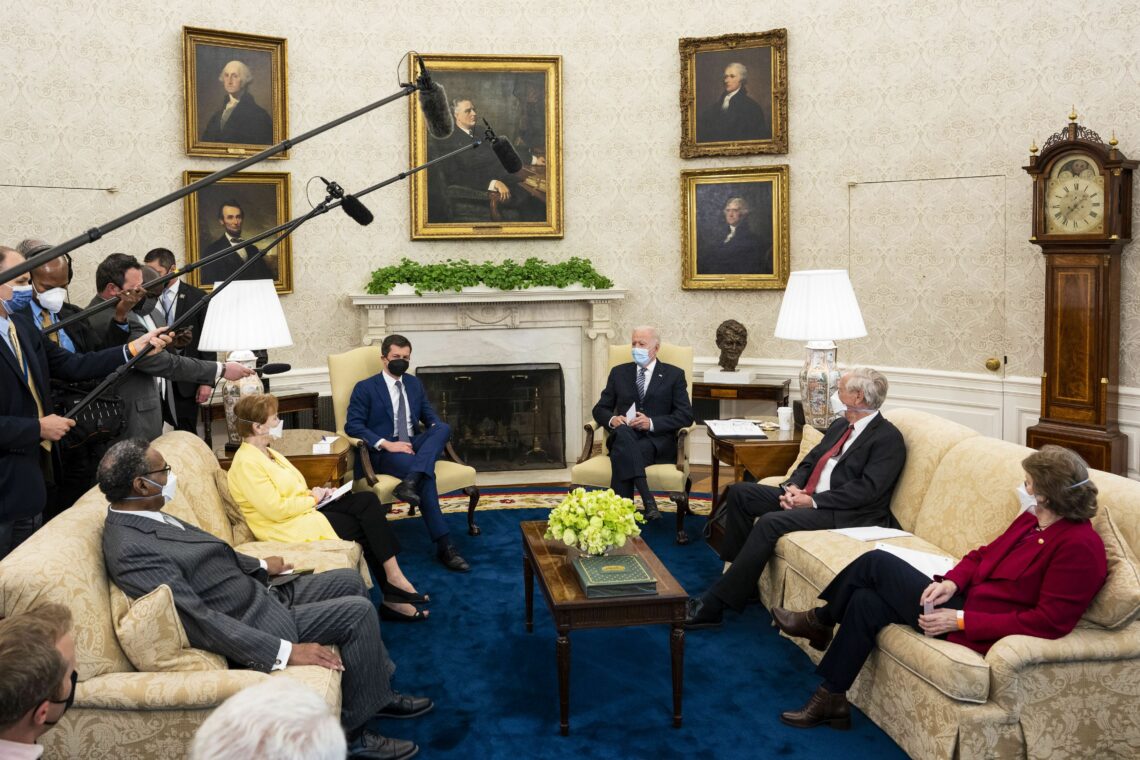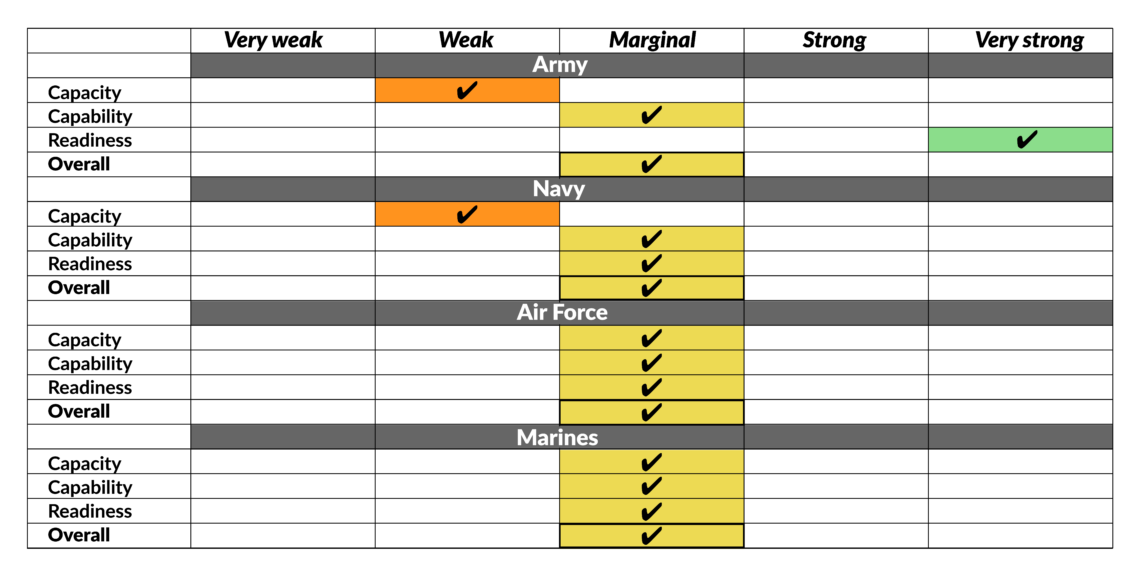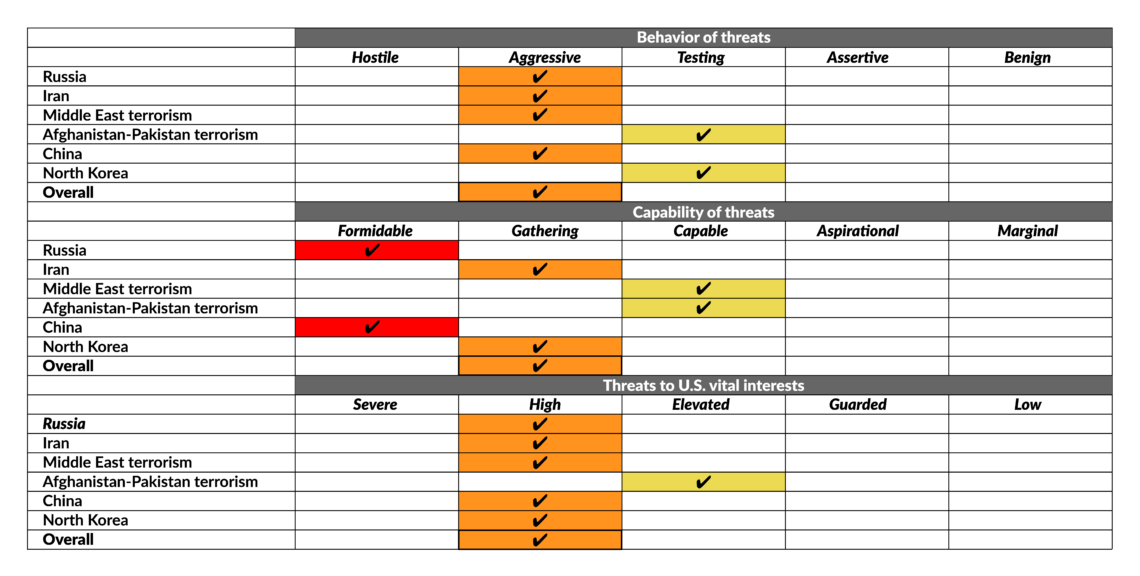Biden budget heralds defense policy shift
In his first proposed budget for the United States, Joe Biden plans to cut defense spending. This could threaten American military readiness and modernization – but the proposal may not get through Congress. President Biden may have to compromise.

In a nutshell
- President Biden’s proposed budget restrains defense spending
- The plan could weaken the U.S. position against other powers
- Resistance in Congress could force the president to compromise
In early April 2021, United States President Joe Biden’s administration put forward its proposed federal budget for fiscal year 2022 (beginning October 2021). Accounting for inflation, the proposal would cut the amount going to the armed forces. Critics argue the proposal would weaken the U.S. in an era of great power competition. The administration says it wants to strengthen global competitiveness through domestic investments. It is not clear whether President Biden’s fiscal priorities will hold or achieve their intended outcomes.
The proposed budget is President Biden’s first since his election, and his proposal for spending on the military arguably made the most news. After four years of substantially increased defense spending under former President Donald Trump, Mr. Biden proposed a defense budget of about $715 billion. Nominally, this represents an increase of about 1.6 percent in spending. With inflation estimated at 2 percent, the proposal amounts to a decrease in the Defense Department’s real purchasing power by about $5 billion.
Facts & figures

Significant items in the U.S. defense budget, such as cost of living raises and fuel, are tied to rising prices, limiting the military’s ability to adjust spending to inflation. That means the decrease will significantly reduce the military’s ability to pay for current operations, sustain readiness and buy new equipment. Analysis by the Heritage Foundation based on the data in the Index of U.S. Military Strength concludes that the defense budget should grow at a sustained rate of 3-5 percent real growth per year to deliver the long-term capabilities to protect U.S. vital interests amid the great power competition.
There are few specifics in the defense proposal, yet many analysts predict the result will be felt in significant cuts to the U.S. Army’s modernization programs.
Criticisms of the plan
Critics of the president’s proposed defense budget argue that the U.S. is a global power with global interests and responsibilities. It must account for defense investments by China and Russia, whose spending increases, computed in terms of purchasing power parity, far outstrip U.S. outlays. Reductions to the U.S. military will not only deliver reduced capabilities but amount to a signal to both Beijing and Moscow that the U.S. will not compete to maintain a favorable balance of forces over the long term.
In response, the Biden team has maintained it will gain efficiency in the defense budget in two ways. The first would be through divesting “legacy capabilities.” Precisely what these are were not detailed in the budget submission. The second is by shifting the focus of the military’s efforts toward the Indo-Pacific to balance China’s rising presence there.
The elements of power are not readily fungible. Diplomacy does not offset the need for a strong national defense.
The Biden team also argues that they are offsetting defense reductions with investments in other instruments of national power, including a 10 percent increase in the State Department spending. This is meant to address pressing global challenges such as climate change and multinational cooperation.
Critics counter that the elements of power are not readily fungible. Diplomacy does not offset the need for a strong national defense, and indeed, a strong military and robust diplomacy reinforce one another.
Domestic focus
More importantly, the administration is stressing domestic investments, arguing that by making the U.S. strong at home and speeding up post-COVID economic recovery, the U.S. will be a more effective force abroad. The president’s budget, for example, calls for a 16 percent increase in discretionary non-security spending. That represents an unprecedented expansion of the public sector. Also included in the administration’s priorities is the president’s proposed American Jobs Act, which calls for up to $2 trillion in investments and government spending.
The president’s critics counter that the expansive government spending is unlikely to deliver real long-term economic growth. Some estimates have found that only about six percent of his plan addresses traditional infrastructure, while the combined total of new programs would grow the federal government by 25 percent. The bill forecasts significant tax increases and will further expand the federal debt, which is already at a historic high.
Facts & figures

The Biden team asserts that the U.S. economy can absorb the additional stimulus spending. U.S. interest rates and inflation remain low. Unemployment is declining, and confidence in the U.S. economy and the American stock market remains strong.
Back to Obama
Not surprisingly, the Biden administration’s foreign and domestic policies reflect many of the priorities set forth by former President Barack Obama. Several former officials in the Obama administration, including the president himself and Domestic Policy Council Chair Susan Rice, National Security Advisor Jake Sullivan and Secretary of State Antony Blinken, now serve in the Biden administration.
President Obama once famously declared he wanted to forgo engagement abroad for “a little nation building right here at home.” He cut military programs and forces and restrained defense spending, which resulted in declining defense capabilities and readiness. He also decreased U.S. presence and engagement in the Middle East and Europe, arguing for a “pivot to Asia.” Many of these policies are reflected in the Biden team’s budget priorities.
The Biden team seems even more emboldened to press forward with a progressive agenda than the Obama administration was.
With majorities in both houses of Congress and strong support in the polls, and the pressing demands of post-Covid recovery, the Biden team seems even more emboldened to press forward with a progressive agenda than the Obama administration was.
Challenges to implementation
President Biden faces two hurdles in realizing that plan. First, President Obama’s policies did not improve the U.S.’s position in the great power competition. The U.S. was challenged on many fronts, including from a more aggressive Russia, an increasingly contentious relationship with a rising China and an unstable Middle East rocked by the rise of Islamic State (also known as ISIS or Daesh). Unemployment remained stubbornly high and economic growth was slow.
In contrast, and despite the Trump administration’s many controversies, the U.S. achieved record low unemployment and strong economic growth before the onset of the Covid-19 pandemic. It also scored increased success abroad, particularly in the Middle East, where ISIS was crushed, and the administration advanced normalization between Israel and the Arab nations.
The further the Biden administration’s moves diverge from the core domestic and foreign policies of the last administration, the more any setbacks will directly affect its agenda. A case in point is the U.S. border with Mexico, where a sharp reversal of policies has resulted in a crisis that U.S. voters find deeply disturbing.
President Biden’s second challenge is that his party has very narrow control over both houses of Congress. There is virtually no bipartisan support for his agenda. Unless procedural changes are made in the Senate, the administration might not be able to push through any of its key legislative proposals.
To get a budget passed, the president may well have to rely on Republican support and accept higher defense spending.
There is virtually united support among Republicans in Congress for the Trump “peace through strength” approach – robust defense spending paired with the constrained use of force. At the same time, Democrats in Congress are widely divided on defense. Some called for defense cuts of up to 10 percent. The result is that to get a budget passed or even get approval for a continuing resolution, the president may well have to rely on Republican support and accept higher defense spending than what the administration has proposed.
It is also possible that Congress does not pass a budget at all, and funding for federal agencies is through a continuing resolution. Expect final consideration of the budget and the National Defense Authorization Act to be delayed to the end of the year.
Scenarios
The most likely scenario is that the Biden administration will have to compromise and accept defense spending at current or higher levels. This will be a result of Republican pressure and an international environment that will challenge the notion that the U.S. can cut back on its global military presence.
The administration’s strategy of focusing more myopically on transforming the domestic economy is unlikely to be sustainable over the long term. In addition to the border crisis, the U.S. is facing increasing competitive pressures from Russia and China. Also, the prospects of resolving proliferation issues with Iran and North Korea remain tentative at best. The administration will have to invest more time and resources in foreign and security policies.
With midterm national elections rapidly approaching, the partisan divide is likely to grow, as is dissatisfaction within the president’s party. Meanwhile, pressure for domestic action will peter out as the U.S. economy inevitably recovers from the pandemic without the need for large additional stimulus.
The wild card here is the fate of the president’s ambitious legislative agenda, which is dependent on maneuvering around Congressional rules and procedures to overcome legislative gridlock. The faster the U.S. economy recovers, the more leverage the White House will lose in pressing Congress to make changes that would allow President Biden to fulfill his domestic agenda.







